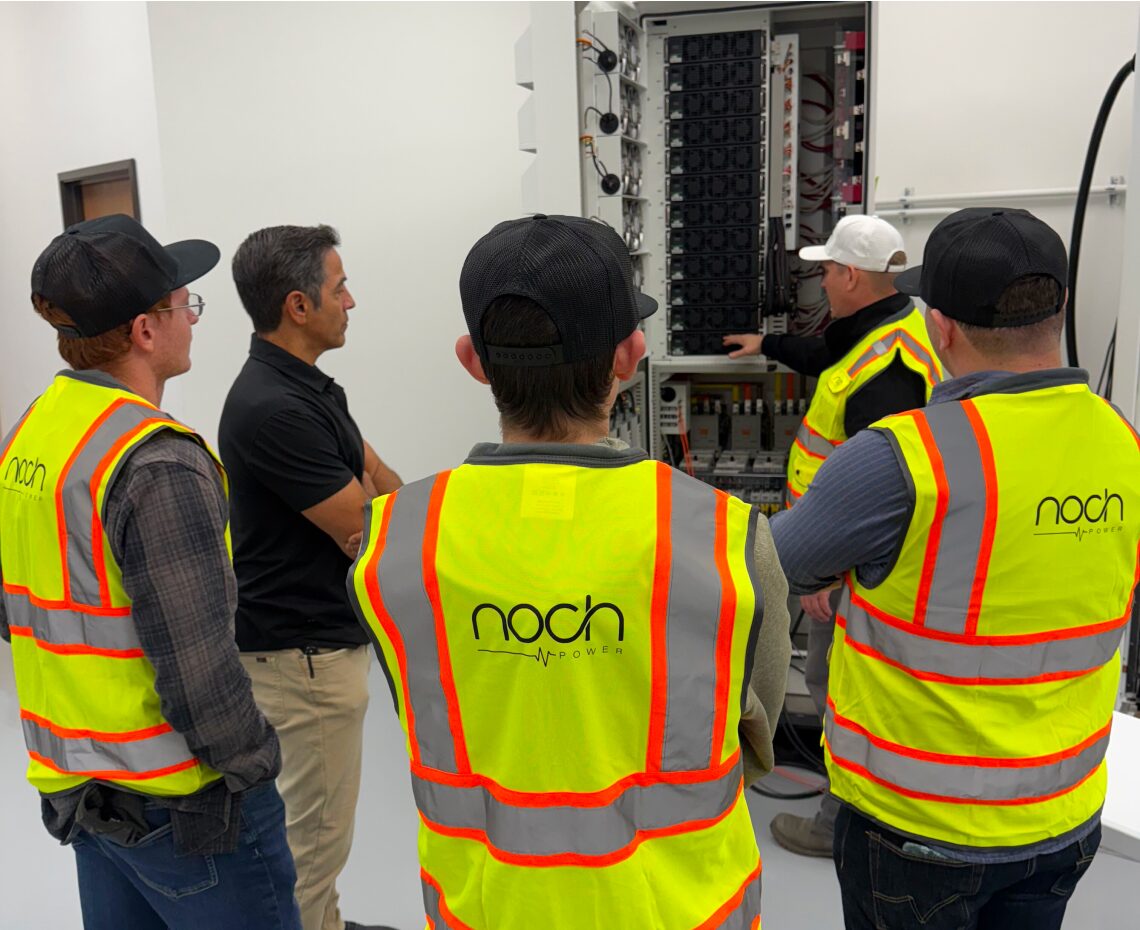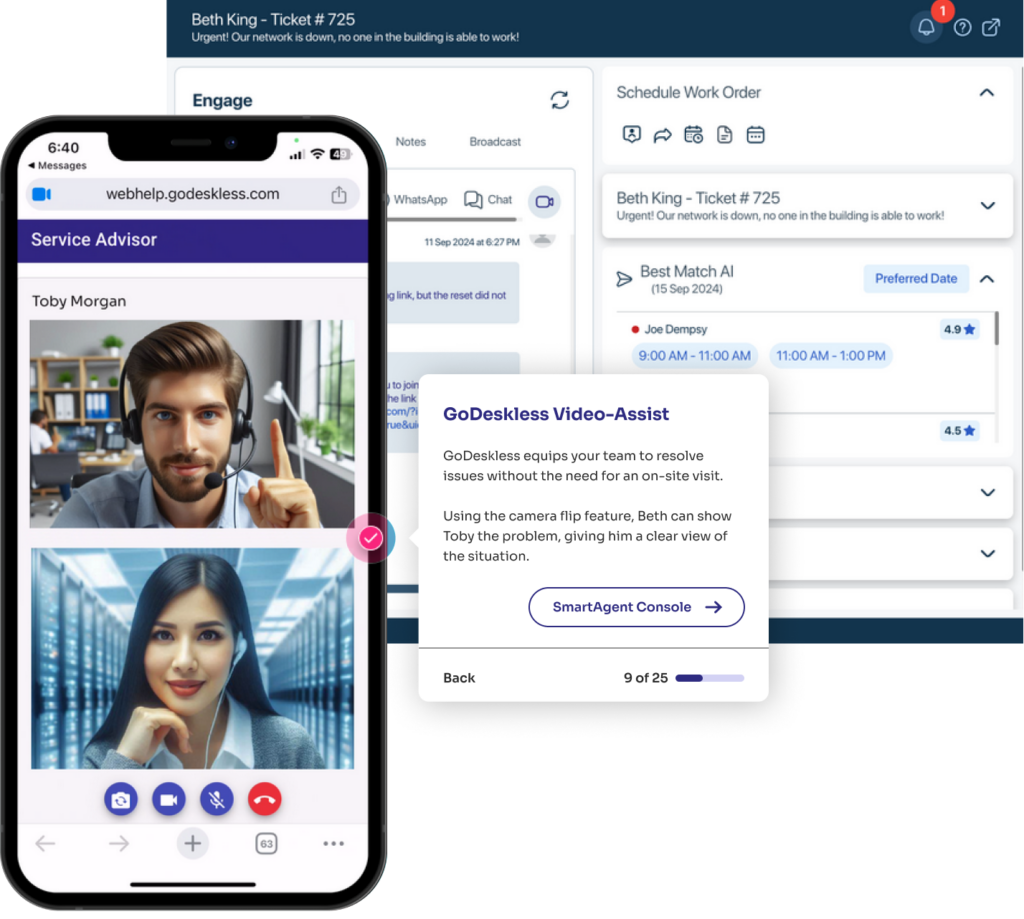Generative AI is currently all the rage. Unless you’ve been living under a rock, you’ll have heard of ChatGPT, Midjourney, and other “GenAI” terms.
Within field service operations, AI as a broader technology has been deployed for a long time. But Generative AI is a different beast. To quote Forbes:
Traditional AI systems are primarily used to analyze data and make predictions, while generative AI goes a step further by creating new data similar to its training data… Traditional AI excels at pattern recognition, while generative AI excels at pattern creation. Traditional AI can analyze data and tell you what it sees, but generative AI can use that same data to create something entirely new.
These are the brand new outputs of text and imagery we see from ChatGPT and others: AI generating, not just predicting or structuring.
For those in field service operations, the question is: How might field service providers leverage GenAI? Where is the hype and the froth, and where are the real use cases? Read on for the full lowdown.
How “Normal” AI is Used in Field Service Operations
“Traditional” AI, driven by machine learning algorithms, has long been used in field service operations, primarily for tasks such as route optimization, predictive maintenance, remote assistance, and forecasting & capacity planning.
- Creating optimal schedules for field workers is achieved through route optimization, which analyzes historical data to enhance service delivery efficiency and reduce travel durations.
- Predictive maintenance allows for proactive servicing of assets and machinery, minimizing downtime and extending their operational lifespan.
- Virtual support for field workers is provided through remote assistance, which utilizes image recognition technology to help them make informed decisions and improve on-site troubleshooting.
- Forecasting and capacity planning use AI models trained on historical and external data to anticipate demand and recommend appropriate staffing levels, ensuring sufficient technician availability.
These are all powerful functions. However, Generative AI introduces a whole new set of capabilities: multimodal reasoning, understanding and generating natural language, and creating actionable insights from diverse data sources.
How might these radically new capabilities be deployed to enhance AI for field service?
The 3 Key Areas Where Generative AI Can Transform Field Service Operations
GenAI comes with a lot of hype. There are lots of areas of field service where it won’t be useful, or at least not yet – such as the hands-on work of dispatching and scheduling. However, there are three big areas of field service operations where GenAI an have an impact, right away:
Customer Self-Service
Currently, one of the most impactful uses of GenAI is in customer self-service, particularly through conversational chatbots and other forms of frontline customer engagement that drive service call deflections.
GenAI-powered self-service and flexible virtual agents can be implemented relatively easily using either a subscription-based LLM or an in-house deployed LLM. Virtual field assistants significantly reduce the need for technician dispatches, enabling customers to resolve issues independently.
Enhancing these assistants with Generative AI allows them to handle a broader range of service tasks. GenAI-powered virtual assistants decrease the time to value for customers and enhance the overall customer experience.
As Cognizant put it:“Most CSPs have customer-facing virtual assistants. But by augmenting these virtual assistants with Gen AI, these tools can guide customers on a wider array of service configuration and activation tasks and resolve service anomaly issues. Not only does this reduce time to value for customers, but it also reduces truck rolls.”
Technician Support and Training
Field technicians often encounter complex issues requiring timely assistance, which can delay service delivery. Generative AI-driven smart coaching can provide real-time insights, bridge skills gaps, and ensure accurate root cause assignment. In other words, GenAI agents can operate as field sidekicks, on the job.
This support improves technician efficiency, enhances training, and results in higher customer satisfaction. LLMs can analyze data gathered from the field and native data systems to identify gaps in training materials, creating opportunities for more targeted and effective training programs.
Execution in the Field
In healthcare, GenAI has proven useful by taking over mundane tasks such as note-taking and summarizing information for doctors and nurses.
Similarly, in field service, GenAI can act as an assistant to field technicians, taking notes, capturing pictures, and summarizing incidents.
Technicians often work in challenging environments where taking detailed notes can be difficult. This is where the LLMs can be very useful.
As Google states, “Technicians don’t always have time to capture all the details of the steps they took to fix a problem manually. Generative AI can automatically generate a draft transcript of their work, capturing customer incidents and their resolutions for future reference.”
With the right LLM, Generative AI can automate data capture, validate information, and generate detailed reports. An example from OverIT illustrates that “Generative AI can significantly speed up Work Order Debrief by capturing details in real-time with simple voice or text prompts, validating the data, and generating reports on mobile devices.”
How Can Field Service Businesses Prepare for Implementing GenAI?
To embrace GenAI effectively, field service providers need to approach this tech in the right way. This strategic planning is essential for effectively incorporating AI for field service.
Identify Use Cases
Field service providers need to pinpoint specific use cases where Generative AI can be most beneficial. Glance at the list above and see which of these would be the best fit. This prioritization involves focusing on scenarios that GenAI can manage with high efficiency. By prioritizing these use cases based on their potential impact, feasibility, and ease of implementation, organizations can ensure a strategic and systematic approach to adopting the technology.
Set Up Data Capabilities
Successful implementation of Generative AI in field service operations hinges on robust data capabilities. It’s essential to digitize and transition to cloud-based field service management systems to effectively capture, store, and consolidate data. Developing comprehensive strategies for data management is critical to training GenAI models and ensuring their optimal performance.
Engage and Train Employees
Engaging field workers and dispatchers early in the process is vital for fostering buy-in and illustrating the value of new technologies. Providing thorough training for employees on how to use GenAI tools is crucial for smooth adoption. This not only maximizes the benefits of the technology but also helps in overcoming resistance to change, ensuring that the workforce is well-prepared to leverage the new tools effectively.
Embracing Generative AI for Future Success
GenAI is young, and there is a lot of buzz around it. However, that doesn’t mean it’s a flash in the pan. If it continues to evolve, GenAI holds transformative potential for field service operations by offering solutions that enhance efficiency, reduce costs, and improve customer satisfaction. Embracing GenAI today can position field service providers for future success and ensure they remain at the forefront of innovation in the telecommunications industry.
To learn more about how digital solutions like GenAI can enhance your field service operations, visit GoDeskless.





